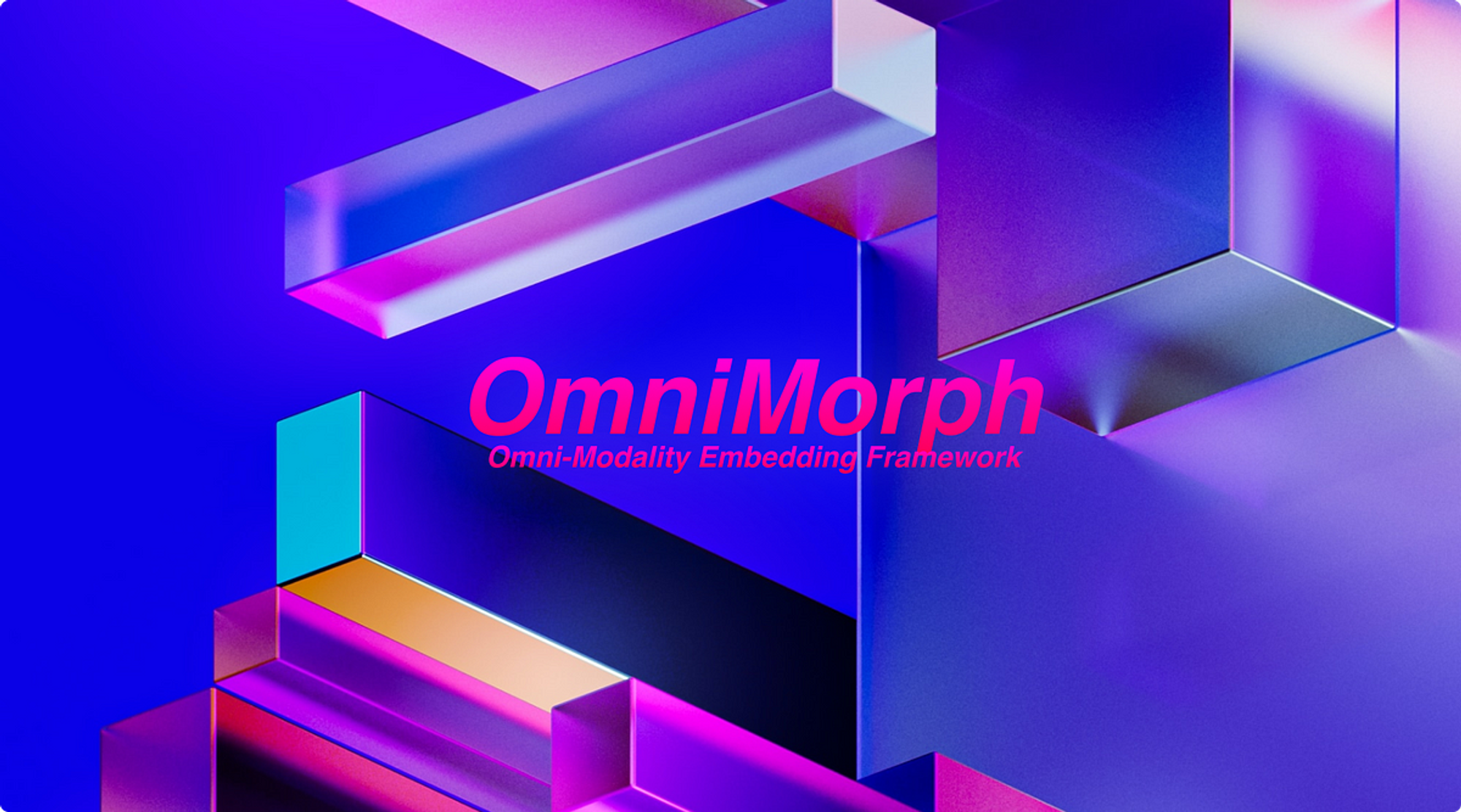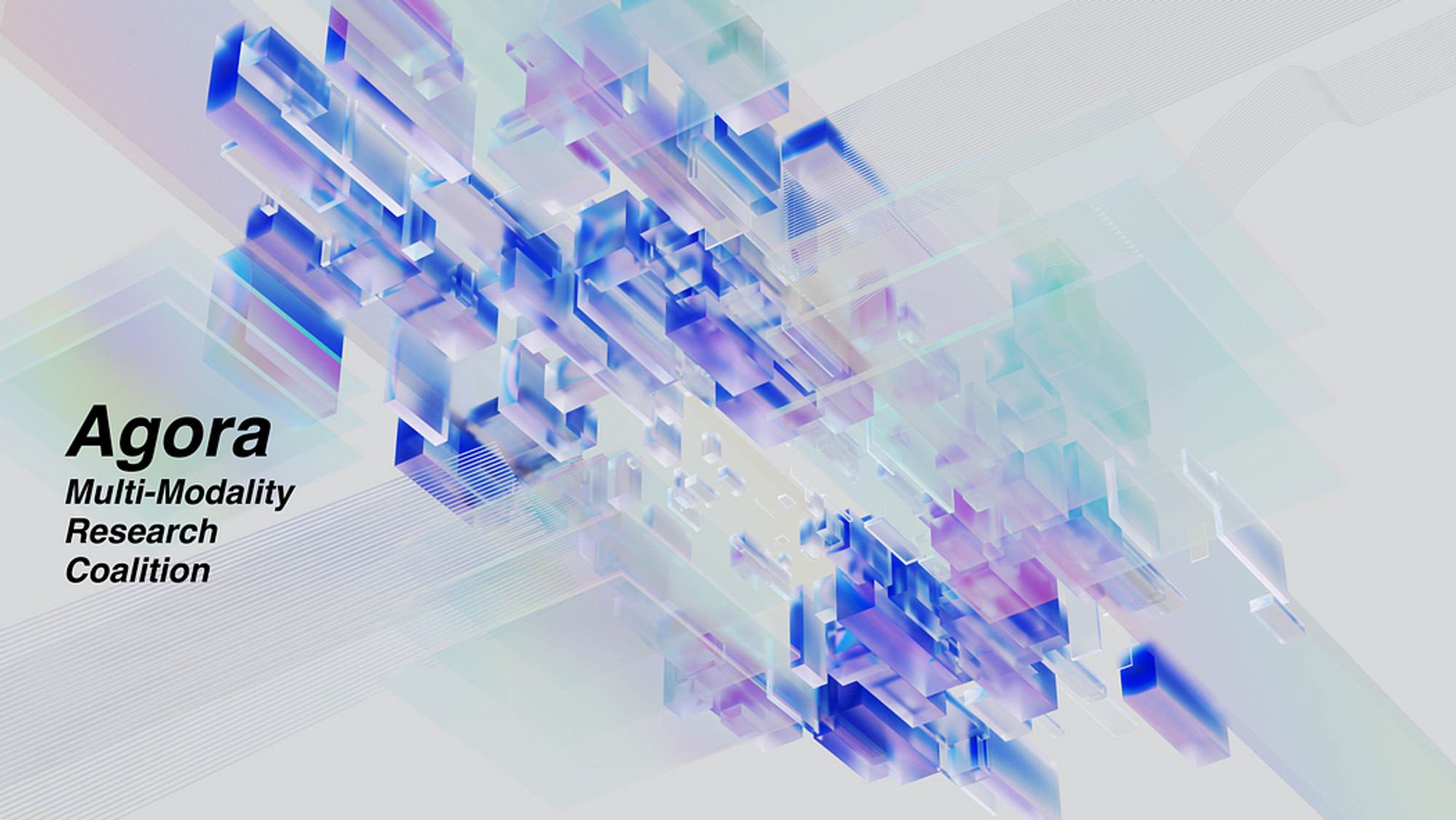Announcing 🎤 OmniMorph: A Unified Framework for Multi-Modality Embeddings
date
May 4, 2023
slug
omni-modality-embeddings-framework
status
Published
tags
Research
summary
Enter OmniMorph, the elegant solution to this daunting problem, providing a simple and intuitive framework to streamline your AI journey.
type
Post

What are Embeddings?
Before diving into this blog, it’s crucial to understand the concept of embeddings.
In the world of machine learning and artificial intelligence, embeddings are a way to represent complex data in a lower-dimensional space.
They transform input data, such as text, images, or audio, into a fixed-size vector of numbers, making it easier for machine learning models to process and analyze the data.
Embeddings enable models to capture the inherent relationships and structure within the data, preserving meaningful information and patterns while reducing computational complexity.
By converting various types of data into a consistent format, embeddings facilitate interoperability between different data modalities and machine learning algorithms.
In the ever-evolving world of AI research and development, generating state-of-the-art (SOTA) embeddings that “just work” has become an increasingly complex challenge if not outright impossible.
This difficulty is further amplified when working with multi-modal data, creating a painful and frustrating experience for researchers and developers alike.
Enter OmniMorph, the elegant solution to this daunting problem, providing a simple and intuitive framework to streamline your AI journey.
Github Repo:
GitHub - kyegomez/OmniMorph: Omni-modality embedding function designed to seamlessly handle and…Discover the future of data transformation with OmniMorph, a cutting-edge, omni-modality embedding function designed to…
github.com
The Multi-Modality Problem
As AI continues to advance, the need to process and understand various types of data has grown exponentially.
Text, images, and audio are just a few examples of the diverse data modalities researchers and engineers must grapple with daily.
Unfortunately, generating SOTA embeddings for each modality typically involves disparate techniques, requiring significant effort to unify and maintain.
Imagine spending countless hours implementing a custom solution for each modality, only to struggle with integrating these solutions into a cohesive system.
The development process becomes cumbersome and inefficient, wasting 100s of hours and countless resources.
But, this painful experience has now become a distant memory.
Introducing OmniMorph: A Unified Framework for Multi-Modality Embeddings
OmniMorph is the answer to these challenges, providing an easy-to-use framework for handling diverse data inputs while intelligently detecting and optimizing embeddings for various modalities.
OmniMorph is a PyTorch-based class that streamlines the process of working with various modalities.
OmniMorph allows you to register and instantiate embeddings for different modalities, such as text, vision, and audio.
Furthermore, it provides a unified API for processing input data and generating embeddings, regardless of the modality type.
Its simplicity belies its power, revolutionizing data processing and offering unparalleled adaptability to users.
Let’s dive into some examples of how OmniMorph can be utilized to save you time and streamline your work.
Basic Usage
First, install OmniMorph using pip:
pip install omnimorphNow, let’s see how easily OmniMorph can generate embeddings for text, image, and audio data:
import torch
from omnimorph import OmniMorphomni_morph = OmniMorph()text_input = torch.randint(0, 10000, (1, 50))
image_input = torch.randn(1, 3, 224, 224)
audio_input = torch.randn(1, 128, 100)text_embedding = omni_morph(text_input, user_defined_modality='text')
image_embedding = omni_morph(image_input)
audio_embedding = omni_morph(audio_input)Just like that, we’ve generated embeddings for three different modalities using a single, unified interface.
GITHUB REPO:
GitHub - kyegomez/OmniMorph: Omni-modality embedding function designed to seamlessly handle and…Discover the future of data transformation with OmniMorph, a cutting-edge, omni-modality embedding function designed to…
github.com
Register and Instantiate Embeddings
First, let’s create an instance of the OmniMorph class:
from omni_morph import OmniMorphomni_morph = OmniMorph()With OmniMorph, you can register and instantiate embeddings for different modalities in just a few lines of code:
omni_morph.register_and_instantiate('text', TextEmbedding, num_embeddings=10000, embedding_dim=768)# Register and instantiate a vision embedding
omni_morph.register_and_instantiate('vision', VisionEmbedding, img_size=224, patch_size=16, in_chans=3, embed_dim=768)# Register and instantiate an audio embedding
omni_morph.register_and_instantiate('audio', AudioEmbedding, in_channels=128, embed_dim=768)Generate Embeddings
OmniMorph provides a unified API for generating embeddings regardless of the modality type. It automatically detects the modality based on the input data’s shape and dtype, or you can explicitly specify the modality type:
# Generate text embedding
text_data = torch.randint(0, 10000, (64, 128)) # Shape: (batch_size, sequence_length)
text_embedding = omni_morph(text_data)# Generate vision embedding
image_data = torch.randn(64, 3, 224, 224) # Shape: (batch_size, channels, height, width)
vision_embedding = omni_morph(image_data, modality_type='vision')# Generate audio embedding
audio_data = torch.randn(64, 128, 128) # Shape: (batch_size, channels, time_steps)
audio_embedding = omni_morph(audio_data, modality_type='audio')Custom Modality Detection
For those working with custom data formats, OmniMorph enables you to provide your own modality detection function:
def custom_modality_detector(input_data):
# Add custom logic to detect input data modality
return "custom_modality"embedding = omni_morph(custom_input, custom_modality_fn=custom_modality_detector)User-Defined Modalities
OmniMorph’s flexibility doesn’t end there. You can even add user-defined modalities by registering the corresponding embedding class:
omni_morph.register_and_instantiate("custom_modality", CustomEmbeddingClass, **kwargs)Then, simply use the custom modality when generating embeddings:
embedding = omni_morph(custom_input, user_defined_modality="custom_modality")Fusion Techniques
Lastly, OmniMorph supports fusion techniques to combine embeddings in a specific way:
def custom_fusion(embedding):
# Add custom logic to fuse the embedding
return fused_embeddingomni_morph.register_fusion_technique("custom_fusion", custom_fusion)Apply the registered fusion technique when generating embeddings:
fused_embedding = omni_morph(input_data, fusion_technique="custom_fusion")OR:
# Define a simple fusion function
def simple_fusion(embeddings):
return torch.mean(embeddings, dim=0)
# Register the fusion technique
omni_morph.register_fusion_technique('simple_fusion', simple_fusion)
# Generate embeddings using the fusion technique
text_data = torch.randint(0, 10000, (64, 128)) # Shape: (batch_size, sequence_length)
image_data = torch.randn(64, 3, 224, 224) # Shape: (batch_size, channels, height, width)
text_embedding = omni_morph(text_data, modality_type='text', fusion_technique='simple_fusion')
vision_embedding = omni_morph(image_data, modality_type='vision', fusion_technique='simple_fusion')
# Combine the embeddings using the registered fusion technique
combined_embedding = simple_fusion([text_embedding, vision_embedding])With these powerful tools at your disposal, OmniMorph offers a comprehensive solution for handling multi-modal data, streamlining your workflow and allowing you to focus on more important aspects of your research and development.
OmniMorph Roadmap: The Next Big Steps
At OmniMorph, we are passionate about making multi-modal embeddings simple, powerful, and accessible to everyone. We have come a long way, but there is still so much to achieve. Here are the next three big steps in our journey, and we invite you to join us in turning these ambitious goals into reality.
1. Comprehensive Pre-trained Models and Embeddings Integration
One of the main challenges in the field of multi-modal learning is the availability and integration of pre-trained models and embeddings. We plan to expand OmniMorph by integrating a comprehensive set of pre-trained models and embeddings for various modalities, such as text, vision, audio, and video. This will include models from the Hugging Face Model Hub, OpenAI’s DALL-E, and OpenAI’s CLIP, among others.
By offering a wide range of pre-trained models and embeddings, OmniMorph will enable researchers and developers to quickly prototype and experiment with various combinations, ultimately leading to better and more powerful multi-modal systems.
2. Advanced Fusion Techniques and Architectures
While OmniMorph already supports simple fusion techniques, we believe that the potential for combining embeddings from different modalities is vast. We aim to research and implement advanced fusion techniques and architectures that can effectively leverage the strengths of individual modalities and create more accurate and powerful representations.
This will involve studying state-of-the-art fusion methods, such as multi-modal transformers, bilinear pooling, and attention-based mechanisms. By implementing these advanced techniques within OmniMorph, users will be able to easily experiment with a variety of fusion methods, driving innovation in multi-modal learning.
3. Active Community and Ecosystem Development
We recognize the importance of an active and vibrant community in driving innovation and adoption. Therefore, one of our primary objectives is to foster an ecosystem around OmniMorph that encourages collaboration, sharing, and learning.
We will achieve this by:
- Creating extensive documentation, tutorials, and sample projects that demonstrate the power and flexibility of OmniMorph.
- Actively engaging with the community through Agora, social media, and conferences to gather feedback, answer questions, and provide support.
- Encouraging contributions from the community to expand the range of supported embeddings, fusion techniques, and other features.
- Organizing hackathons, workshops, and other events to showcase the latest developments and innovations in the field of multi-modal learning using OmniMorph.
Embracing the OmniMorph Revolution
GitHub - kyegomez/OmniMorph: Omni-modality embedding function designed to seamlessly handle and…Discover the future of data transformation with OmniMorph, a cutting-edge, omni-modality embedding function designed to…
github.com
By simplifying the process of generating SOTA embeddings for various data modalities, OmniMorph enables researchers and engineers to accelerate their work and eliminate the pain and frustration of working with multi-modal data.
With its user-friendly interface and flexibility, OmniMorph is poised to revolutionize the way we approach AI research and development.
No longer must you toil with disparate techniques and cumbersome integrations.
OmniMorph is here to provide a unified solution that adapts to your needs, unlocking new possibilities for innovation and pushing the boundaries of artificial intelligence.
Join the OmniMorph revolution today and experience the future of data transformation.
With OmniMorph, the possibilities are endless, and the future of AI is brighter than ever before.
To learn more about OmniMorph, explore detailed usage and code examples, or contribute to this groundbreaking project, visit the OmniMorph GitHub repository. Let’s work together to shape the future of AI and make the world a better place.
Join Agora
Join the Agora Discord Server!Agora advances Humanity with Multi-Modality AI Research | 140 members
discord.gg
Agora is a community of brave humans who seek to make a real change in the world for the advancement of humanity.

https://apac.ai
We believe in the power of collaboration and shared knowledge to unlock the full potential of AI and machine learning.
By joining Agora, you become part of a vibrant network of researchers, developers, and visionaries dedicated to pushing the boundaries of artificial intelligence.
Members have access to cutting-edge tools and resources, such as OmniMorph, and are encouraged to contribute their ideas, skills, and expertise to help shape the future of AI.
Together, we can create a brighter tomorrow by leveraging the power of technology and the ingenuity of the human spirit. If you’re ready to make a difference and join a community of like-minded individuals passionate about AI, click the link below and become a member today.
Join the Agora Discord Server!Agora advances Humanity with Multi-Modality AI Research | 140 members
discord.gg
By embracing OmniMorph and becoming a part of the Agora community, you’ll be at the forefront of AI research and development, harnessing the power of multi-modal embeddings to drive innovation and discovery.
The future of artificial intelligence is in our hands, and together, we can shape a world where technology serves humanity in profound and transformative ways.